Stereoisomer examples or spatial isomerism as the name suggests can be defined as the molecule which has the same molecular formula and arrangement but differs in terms of their orientation in 3-D space. Stereoisomer examples are further divided into 2 types based on reflection namely enantiomers and diastereomers.
Various stereoisomer examples along with their types are discussed below:
- Cis-1,4-dimethylcyclohexane and trans-1,4-dimethylcyclohexane stereoisomer examples
- cis-Dichloroethene and trans-Dichloroethene stereoisomer examples
- L-(+)-Lactic acid and D-(-)-Lactic acid stereoisomer examples
- Cholesterol stereoisomer examples
- L-(+)-alanine and D-(-)-alanine stereoisomer examples
- L-Glyceraldehyde and D-glyceraldehyde stereoisomer examples
- D-Glucose and L-Glucose stereoisomer examples
- L-cysteine and D-cysteine stereoisomer examples
- D-tartaric acid and L-Tartaric acid stereoisomer examples
- D-amino acid and L-amino acid stereoisomer examples
- L-ascorbic acid and D-ascorbic acid stereoisomer examples
- L-Isoascorbic acid and D-Isoascorbic acid stereoisomer examples
- D-(+)-Limonene and L-(-)-Limonene stereoisomer examples
- (S)-thalidomide and (R)-thalidomide stereoisomer examples
Cis-1,4-dimethylcyclohexane and trans-1,4-dimethylcyclohexane stereoisomer examples
Both of the above-mentioned cis and trans stereoisomer examples show some amount of conformation. These stereoisomer examples have the planar conformation and show a chair-like structure. Out of both stereoisomer examples, the trans form is the stable one because here both the methyl groups are in an equatorial position which somehow reduces the 1,3-diaxial repulsions. On the other hand in the cis form, the methyl groups are already in the axial position. This scenario represents the presence of ring flipping in 1,4-dimethylcyclohexane.

cis-Dichloroethene and trans-Dichloroethene stereoisomer examples
The above-mentioned 1,2-Dichloroethene have 2 stereoisomer examples which can be specified as geometrical isomers. The presence of double bond and unsaturated carbon and attachment of hydrogen and chlorine around C=C confirms that they can exist in cis-trans form. In terms of physical properties both the stereoisomer, examples are quite different. For instance, the cis isomer exhibits polarity due to the presence of net dipole moment. On the other hand, the trans form is a nonpolar molecule.

L-(+)-Lactic acid and D-(-)-Lactic acid stereoisomer examples
Lactic acid is a chiral molecule and has two stereoisomer examples. These are specified as enantiomers of lactic acid. They are specified as enantiomers as they exhibit optical activity. If both of them are mixed in equal amounts then they form racemic mixtures.
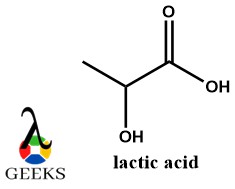
Cholesterol stereoisomer examples
Cholesterol as stereoisomer examples is quite complex in structure and isomer representation. It is one of those naturally occurring organic compounds which have more than one stereocenter. Cholesterol has 8 stereogenic centers so according to the 2n formula, it can have 258 possible stereoisomer examples out of which only one is naturally occurring and others are artificially synthesized.
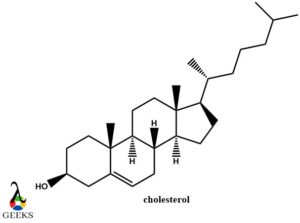
L-(+)-alanine and D-(-)-alanine stereoisomer examples
L-alanine and D-alanine stereoisomer examples are enantiomers as they are mirror images of each other. Here both the stereoisomer examples have different roles to play in amino acids. The right form or D-form is found in polypeptides and bacterial cell walls. Similarly, the left-handed stereoisomer examples or L-form is incorporated into proteins and form 7.8% of primary protein structure.

L-Glyceraldehyde and D-glyceraldehyde stereoisomer examples
Glyceraldehyde is one of the very important classes of carbohydrates. Here the meaning of L and D stereoisomer is defined by the position of the -OH group at the penultimate carbon. If the -OH group is present on the right side then it is a D isomer and if on the left then it is an L-isomer. Here both glyceraldehyde stereoisomer examples are mirror images of each other hence they are subcategorized as enantiomers.
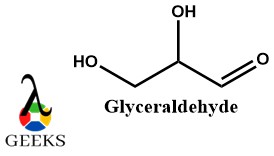
D-Glucose and L-Glucose stereoisomer examples
They are very important sugar stereoisomer examples. Their classification for D and L isomers is similar to that of any other carbohydrate class. Unlike many carbohydrate stereoisomer examples, glucose is a mirror image but it cannot be superimposed. Also, the D-stereoisomer examples have 4 stereocenters which indicates that D-Glucose has 16 possible stereoisomers.

L-cysteine and D-cysteine stereoisomer examples
L-cysteine and D-cysteine stereoisomer examples exist on the same notions of L and D-Glyceraldehyde. But only L-cysteine is of significance due to its existence in mammals including human beings.
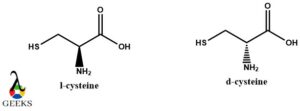
D-tartaric acid and L-Tartaric acid stereoisomer examples
D-tartaric acid and L-tartaric acid stereoisomer examples show optical activity and can affect plane polarised light. These stereoisomer examples are non-superimposable mirror images of each other and are enantiomers
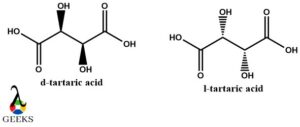
D-amino acid and L-amino acid stereoisomer examples
Amino acids generally are stereoisomer examples. All of them exhibit enantiomerism except the glycine amino acids. They all are mirror images of each other and are designated L and D for the left and right sides respectively. Mostly L-amino acids are found in animal bodies. There exists a mixture of both the stereoisomer examples which are called racemic mixtures or DL-amino acids.
L-ascorbic acid and D-ascorbic acid stereoisomer examples
Like any other amino acid stereoisomer examples, they exist as laevo and dextro forms. The only difference in both of the stereoisomer examples is the position of the hydrogen atom in the opposite stereo direction. L-ascorbic acid has more benefits and is primarily used for treating scurvy.
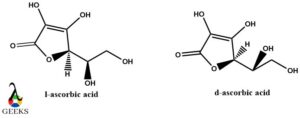
L-Isoascorbic acid and D-Isoascorbic acid stereoisomer examples
There is not much difference between isoascorbic acid stereoisomer examples and ascorbic acid stereoisomer examples. Both of the structures are used in combination with L-ascorbic acid and D-isoascorbic acid to cure common colds. D-isoascorbic acid is the epimer of ascorbic acid and is used as an antioxidant.
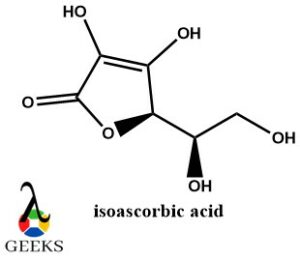
D-(+)-Limonene and L-(-)-Limonene stereoisomer examples
Limonene is a monoterpene with a citrusy smell. It exhibits optical isomerism where both the stereoisomer examples can rotate the plane of polarized light. The D one is called dextrorotatory and the L one is laevorotatory as they can rotate in right and left directions respectively. The D form is found in the extraction of citrus fruits and the L form is obtained from pine needles. The D and L isomers also exist in together as a DL mixture or racemic mixture. This mixture is one of the important parts of turpentine as well which has several uses in several industries.

(S)-thalidomide and (R)-thalidomide stereoisomer examples
Thalidomide has a very tragic background as a major medicinal discovery mishap in Germany. Specifying the type of stereoisomer examples then thalidomide shows enantiomerism where both the structures are mirror images of each other. The racemic mixture of (R) and (S) also exists. As it is a major medicinal component so under desirable biological conditions the stereoisomer examples can show interconversion. The (R) isomer usually has a sedative effect and the (S) isomer has teratogenic effects.
Conclusion
So in conclusion stereoisomer examples exhibit the properties of chirality and optical activity where they are distinguished on how they arrange themselves in 3 dimensional space and how they rotate the plane polarized light. This spatial arrangement results in compounds with same molecular formula but different properties which is the basis of organic reactions.

Hello, I am Mansi Sharma, I have completed my master’s in Chemistry. I personally believe that learning is more enthusiastic when learnt with creativity. I am a Subject Matter Expert in Chemistry.
Let’s connect through LinkedIn: https://www.linkedin.com/in/mansi-sharma22